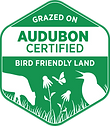
Who We Are

Keystone Land and Livestock LLC manages grass-fed cattle across 4,700 acres of grassland, oak savanna and chaparral in the Sutter Buttes mountain range. We practice adaptive rotational grazing, which produces healthy cattle and resilient, abundant, and biodiverse grasslands.
Our Story
Keystone Land & Livestock LLC. was co-founded and is run in partnership by Matthew and Riley Rose-Stark. Since meeting at UC Berkeley, we've spent nearly a decade learning and working at a wide array of regenerative farms and ranches across California; learning how to care for land while producing nutrient dense food. In Petaluma, Riley worked as a contract grazer moving hundreds of sheep through semi-urban landscapes for fire protection and ecological improvement, and Matthew worked at a custom grazing outfit, managing large groups of cattle, across thousands of acres for the explicit goal of increasing biodiversity, grass productivity, and soil health.
In 2022 we moved back to the ranch Riley grew up on, which like most of the conventionally managed rangeland in California, had been leased out, set-stocked, and over-grazed for decades. We started Keystone in the hopes of reversing the process of ecological degradation that we saw on the ranch through active and intentional management of livestock. We love this work, from calmly moving cattle through pastures, to training our dogs, to watching the grass grow. These last few years have deepened our faith in the power of land to heal and improve with properly timed grazing and recovery. We believe that by healing the land, we heal ourselves, in both body and spirit, and we are eternally grateful to be a small part of that relationship.
The Land

The Sutter Buttes are a geological anomaly; an extinct volcano surrounded by industrial agriculture for 20 miles on every side, they rise above almond orchards and rice fields to craggy peaks topping 2000 feet. Before the dams and levees were built, the Sacramento Valley would flood annually and the Buttes would effectively become an island for months on end, making it a refuge for animals and people alike. The weight of the Sutter Buttes pushes down on the earth's mantle, creating a depression around it that constitutes one of the largest protected wetlands in the Central Valley. The Sutter Buttes and the Butte Sink wetlands represent both the highest and lowest points in the valley and together they comprise its largest undeveloped, and relatively intact ecosystem providing habitat for hundreds of species, and forming a contiguous migration corridor for enumerable mammals, birds, insects, and reptiles.
The Sutter Buttes are a sacred place to the Nisenan, Konkow and Patwin people whose ancestral lands surround them and who know them as "Histum Yani" and "Onolai-tol" respectively, meaning “Middle Mountain” or “Spirit Mountain." Though there were no known permanent indigenous settlements within Middle Mountain, these tribes regularly visited the Buttes to gather acorns and wild foods, hunt, and perform ceremonies and rituals. They also feature prominently in both tribes’ cosmology as the origin place of their people.
During the California gold rush in the 1850's, an onslaught of old-world diseases and state sanctioned violence inflicted by European settlers decimated indigenous populations in the Sacramento Valley. Those who survived were forcibly removed and relocated to reservations, often hundreds of miles away.
Early settlers farmed in the rich valley soil surrounding the Buttes and graze livestock, primarily sheep, in the interior. Most of the ground currently managed by Keystone was once a part of the Wilbur sheep ranch, consisting of over 20,000 acres initially deeded to William Wilbur by Ulysses S Grant.
Riley’s great great grandfather emigrated to the area at the turn of the century to farm along the Sacramento River and his son purchased acreage in the Buttes in the 1940’s. Her grandfather, Bob Steidlmayer, raised cattle there until the 1970’s when an injury and low cattle prices forced him to leave the cattle business to focus on farming full time.
In 2022 Riley and Matt moved back to the ranch and started Keystone Land and Livestock, building on the Steidlmayer family’s ranching heritage while forging their own path grounded in ecological stewardship.
The History

Partnerships & Certifications


